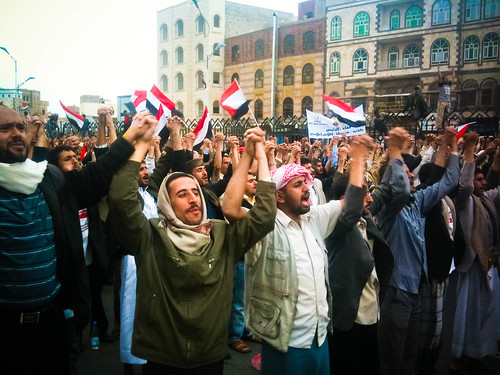Opinion: How did we get to this point in Yemen?
Yemen #Yemen

Editor’s Note: Peter Bergen is CNN’s national security analyst, a vice president at New America, a professor of practice at Arizona State University and the host of the Audible podcast “In the Room” also on Apple and Spotify. He is the author of “The Rise and Fall of Osama bin Laden.” The views expressed in this commentary are his own. Read more opinion at CNN.
CNN —
President Joe Biden has launched arguably the most consequential military attack of this administration, striking multiple Houthi targets in Yemen and widening the conflict in the Middle East — something his administration has tried to avoid since Hamas attacked Israel on October 7.
So how did we get here? The immediate reason, of course, is that the Houthis have launched 27 attacks on commercial shipping in the Red Sea in the approaches to the Suez Canal, one of the busiest shipping lanes in the world, in nominal support of Hamas. (Not a great time to have had an initially incommunicado, and still-hospitalized, US Secretary of Defense Lloyd Austin, who authorized the strikes in Yemen from his hospital bed on Thursday.)
The Houthis, who were once a ragtag militia with the purely local aim of trying to overthrow the Yemen government, are now projecting Iranian power, not only in the Red Sea but across the region. In other words, just as Hezbollah in Lebanon, 1,500 miles to the north of Yemen, is effectively an arm of the Iranian government, so too now are the Houthis.
The Houthis practice a form of Zaydi Shiism that is theologically distinct from the orthodox Shia clerics who run Iran, and while the Houthis have been sympathetic to Iran in the past, it is only in recent years that they have become close allies.
Here is how that happened: In 2015, in what would turn out to be a spectacular act of strategic folly, the de facto ruler of Saudi Arabia, Crown Prince Mohammed Bin Salman, then the Saudi minister of defense, launched a war in neighboring Yemen to prevent the rebel Houthis from taking over the country.
The Saudis used considerable airpower in Yemen, killing an estimated 24,000 people, including 9,000 civilians, and leveling schools and hospitals with US intelligence and support, causing what the United Nations at the time called “the world’s worst humanitarian crisis.” Sound familiar? It was particularly ironic then that the Saudi crown prince convened a conference of Arab leaders last November in Riyadh who issued public statements condemning Israel’s actions in Gaza. (Of course, a key difference in the conflicts is that the war in Gaza was touched off by Hamas’ attack on Israel.)
During the Saudi war in Yemen, Iran, which views Saudi Arabia as a critical regional enemy, supplied the Houthis with a steady supply of armed drones and advanced ballistic missiles, the same weapons that the Houthis are now deploying against commercial shipping in the Red Sea. Those weapons have also been used to attack oil facilities in Saudi Arabia and Abu Dhabi, the capital of the Saudi-allied United Arab Emirates, and, more recently, have targeted Israel as well.
After more than seven years of war and not achieving its aim of halting the Houthis from controlling much of Yemen, the Saudis are now trying to negotiate a peace deal with the Houthis, so Saudi Arabia was not one of the named participants on Thursday night’s strikes on Houthi targets. Yet, Saudi Arabia is a key reason that the Houthis are now so closely allied to Iran and so well armed.
Get Our Free Weekly Newsletter
In a richly ironic statement, Saudi Arabia expressed concern over the US-led strikes against the Houthi targets, saying, “While the Kingdom stresses the importance of maintaining the security and stability of the Red Sea region, in which freedom of navigation is an international demand because it harms the interests of the entire world, it calls for restraint and avoiding escalation in light of the events the region is witnessing.”
Let’s hope that the US-led strikes restore deterrence against the Houthis launching more strikes in the Red Sea. But already the regional conflict that the Biden administration was hoping to contain has spread to Yemen, to Israel’s northern border with Hezbollah and to Iraq, where a recent US strike on the leader of an Iranian-backed militia has amplified calls for the removal of all US troops that remain in Iraq.